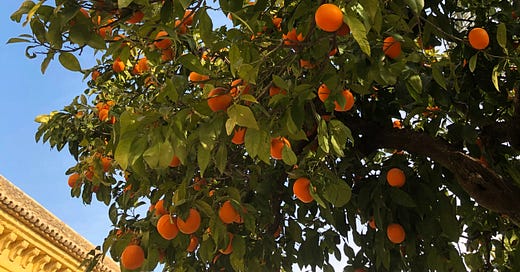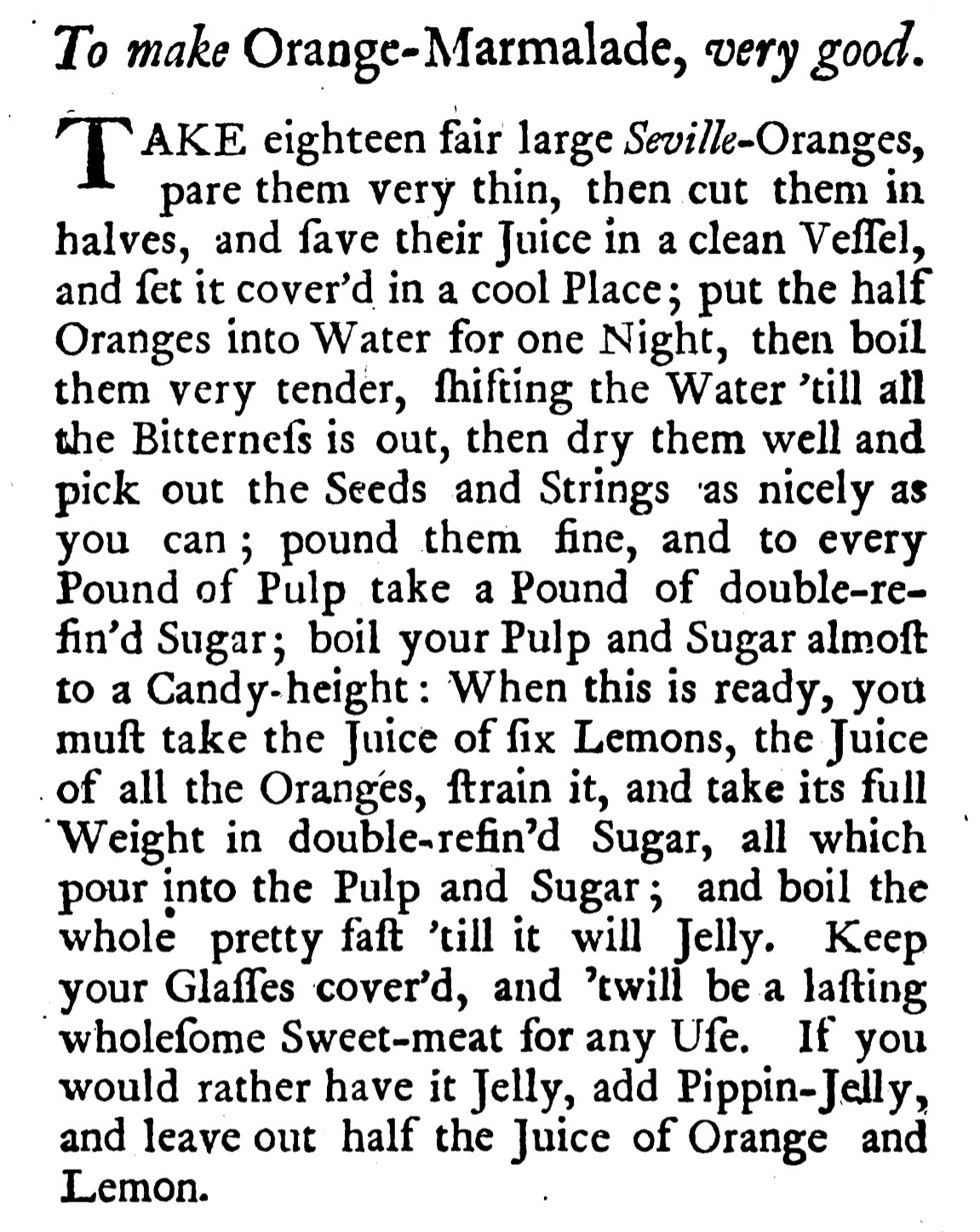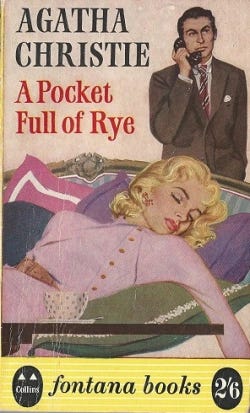From Marmalade to Butter'd Bread
via Joy, Gratitude, Quince, Diagrams, Murder, 007 and Two Famous Bears
Dearest Gentle Reader,
Apart from an online writing retreat which gave me a huge boost in how I felt about my writing I seem to have come to an almost absolute stop. I thought I would want to grasp every opportunity to write and that this would be the year that I would hardly be able to stop myself from writing to you but that has not been the case. I just haven’t been able to bring myself to write down a recipe let alone a letter worth sharing with you.
Then I saw something online about writing as if the ghosts of women who couldn’t write or weren’t allowed to write or had no voice were looking over your shoulder or something similar. You would think would be a big shove towards my keyboard. It wasn’t, it just made me feel guiltier.
However, all is not lost. I found myself with an unexpected weekend morning in bed with an unusually snuggly, purry cat at my side, listening to the radio. Suddenly the room was full of the irrepressible joy of the caller, her voice exploding with her happy feelings. I thought it must be about a huge life event but when I properly listened it was actually something quite small and I realised what I was missing. I haven’t been appreciating the small things like unusually purry cats or how good slightly burnt hot toast and marmalade tastes with really strong, hot tea or even the regular morning glimpse of a grazing llama/alpaca from a fast train window.
I haven’t been treating every spare precious moment as I should by making conscious decisions about how to spend them, instead falling into an abyss of scrolling and bad news. I’ve been missing out on the simple visceral pleasures and it needs to stop. I started with the hot buttered toast with sharp marmalade and a big mug of nearly mouth-scaldingly hot tea, all back in bed with the cat, using a bigger plate than usual to combat the high crumb risk. The second step was writing to you in case this rings a familiar early year bell and it might help to read it from someone else.
As marmalade is on my mind, I thought I might do some reading and just like Alice, I fell down a rabbit hole. I was going to say a rabbit hole of marmalade but that is just too sticky. By a strange coincidence, marmalade was with Alice in her rabbit hole too
“She took down a jar from one of the shelves as she passed; it was labelled `ORANGE MARMALADE', but to her great disappointment it was empty: she did not like to drop the jar for fear of killing somebody, so managed to put it into one of the cupboards as she fell past it.”
This is just the beginning of the proliferation of marmalade in our society that I now feel a need to share with you, mostly just to make space in my head for something else to spread on toast, very possibly anchovies.
Anyway, back to marmalade, I think we should begin with history, just to give us some context. Firstly, you can blame the Portuguese for the name, it comes from ‘marmelo’ which is actually the word for quince. That's because that’s what early marmalades were made from and they started to be shipped over with fortified wines as an extra that could be squeezed in around the hold as an extra luxury money making item. It also wasn’t in jars, it came in boxes because it was a solid item. Have any of you ever had a particular fancy cheeseboard where they serve manchego cheese with a side of membrillo and/or experienced this in Spain? If so you have had a quite similar product to what the Tudors referred to as marmalade made from quinces although the Tudor version would have been much more heavily spiced and laced with rosewater as it was heavily influenced by the muslim food traditions of Al-Andalus.
These delicious pastes were served with other sweetmeats at the end of meals and were thought to aid digestion in a lovely tasty way because quince was known for assisting the stomach, bowels and bladder. The other element, sugar, was also considered a digestive aid so it was the perfect choice.
Preserving quinces goes way back, the Ancient Greeks preserved them in honey with the skins and pips removed, these were known as Melomeli or ‘apple in honey’ which passed into Latin as melimela from which the Portuguese took their word for quince and hence their word for the sticky confection made from it. It’s another word which moved from the Greek to the Latin which named our quince and our version of the sticky, spiced thick paste that was to eventually become our modern version of marmalade. This was Cidonitum which reflected the place that the best quinces came from. We derived via a pretty circuitous and possibly French route ‘quine’ from this and thus quince and the spiced paste made here was called chardequynce. The French took their name for quince from the Cidonitum route rather than the Spanish and Portuguese marmelada and called the resulting paste Condoignac.
I’ve created a little diagram below which illustrates some of the info in these paragraphs. I thought I probably should if only because there was a lot of information and even I was getting confused. Plus I bloody love a diagram and don’t get enough chances to create them.
Over the next few centuries we began to make the thick paste from other fruits including oranges, lemons, wardens (a type of pear) and pippins (a type of apple) and used the Portuguese term to differentiate them. We were also influenced by the French fashion for making a more liquid version stored in pots at the same time as preserving the boxed version and started producing different fruit flavoured pastes. Cooks found that pippins and particularly their pips helped to achieve a firm set even when using citrus fruits. Cooks also began to notice that the set was thicker in a purely orange marmalade when the skins were added as they were full of what we now know as pectin.
The inventor of orange marmalade is unknown or perhaps was legion across the households of the gentry and we are missing too many handwritten receipt and household books of the seventeenth century to investigate further. We are lucky enough to retain however the recipe of the mother of Rebecca Price. Rebecca copied the instructions for ‘marmelett of oringes: my mother’s receipt’ into her own recipe book in 1681.’ This marmalade begins with the rind of the best Seville oranges sliced very thin and boiled in two waters until tender. It took a while for the printed cookery books to catch up but the first printed recipe for a recognisable marmalade was from Mary Kettilby's 1714 cookery book, A Collection of above Three Hundred Receipts.
Why were Seville oranges so popular? The British Isles are not exactly known for our citrus and indeed these oranges did follow the route of the previous quinces and ready made marmalades of earlier times. These sour oranges trees were brought to Al-Andalus in Spain by its new citizens and thrived using new agricultural techniques, the fruits made the sea journey north fairly easily (the mould mostly wiped off). They generally became affordable in the seventeenth century for middle income families as well as the gentry.
The recipe basically progressed from beaten marmalade (as in Mary Kettilby’s book) to chip or shred marmalade which contained the shredded peel to the slightly softer set breakfast item we know today. It was found to be fairly easy to produce on a commercial scale, particularly in Scotland where the ships of oranges also made their way. The Scottish cooks had found it harder to make some of the other fruit marmalades due to the climate and were very enthusiastic over the kind made with the purchased exotic fruit.
The Scottish commercialisation of Seville Orange marmalade helped it to find new customers and interestingly C Anne Lewis in the Book of Marmalade also credits Scotland as the place that moved finally marmalade from the evening, where it still held a place among the evening sweetmeats, to breakfast:
“The most striking contribution of the Scots to the history of marmalade is not, however, to be sought in the realm of recipes. It lay in the transferring of the conserve to a new mealtime position, as part of the first meal of the day. The medicinal virtues of orange peel ‘condite with sugar, and taken fasting in a small quantity’, as recommended by Sir Thomas Elyot, had not been forgotten.’ Both the peel and the sugar were warming to the cold early morning stomach.”
In such a fashion marmalade had made its way from a luxury sweetmeat worthy of presenting to a King to a standard breakfast condiment that still makes the range of a railway station M&S today. There is obviously lots more to it and should you wish to investigate the full story which includes how marmalade is connected to love, find recipes for ‘restorative’ marmalades as well as the truth to its connection with curing scurvy; I would heartily recommend reading the book which is available on archive.org. I would have shared more of that here but I haven't got space because I wanted to talk marmalade, books and murder. Also, to give credit where it is definitely due she does a much better job, fancy diagrams aside.
I think some of you were starting to suspect that I only started this topic to show off my beautiful photos of Seville oranges actually on their trees in Seville and Cordoba but I assure you it was more to do with Miss Marple (mostly anyway).
I love the book A Pocketful of Rye, a series of murders connected by a nursery rhyme or are they? There are many theories behind the origin of this rhyme, sadly the Bluebeard the pirate one is definitely untrue. It first went into print in 1744 and now there are so many layers of possibility that we have no way of confirming the original meaning. In the novel Agatha Christie creates situations that at first seem to come directly from the lyrics but she actually uses this to cleverly hide the culprit and their reasons. I was going to go completely spoiler free but it has been published since 1953 so I thought I could drop a hint. Marmalade is definitely involved somewhere and Miss Marple is a glorious avenging angel.
I also thought you might enjoy some quotes from classic British literature demonstrating how orange marmalade is held close to the heart including by Britain’s most famous spy and its much loved bear:
“There was a jug of creamy milk for the children (Mr Beaver stuck to beer) and a great lump of deep yellow butter in the middle of the table from which everyone took as much as he wanted to go with his potatoes, and all the children thought- and I agree with them- that there's nothing to beat good freshwater fish if you eat it when it has been alive half an hour ago and has come out of the pan half a minute ago. And when they had finished the fish Mrs. Beaver brought unexpectedly out of the oven a great and gloriously sticky marmalade roll, steaming hot, and at the same time moved the kettle onto the fire, so that when they had finished the marmalade roll the tea was made and ready to be poured out.”
― C.S. Lewis, The Lion, the Witch and the Wardrobe
“Breakfast was Bond’s favourite meal of the day. When he was stationed in London it was always the same. It consisted of very strong coffee, from De Bry in New Oxford Street, brewed in an American Chemex, of which he drank two large cups, black and without sugar. The single egg, in the dark blue egg-cup with a gold ring round the top, was boiled for three and a third minutes. It was a very fresh, speckled brown egg from French Marans hens owned by some friend of May in the country. (Bond disliked white eggs and, faddish as he was in many small things, it amused him to maintain that there was such a thing as the perfect boiled egg.) Then there were two thick slices of wholewheat toast, a large pat of deep yellow Jersey butter and three squat glass jars containing Tiptree ‘Little Scarlet’ strawberry jam; Cooper’s Vintage Oxford marmalade and Norwegian Heather Honey from Fortnum’s. The coffee pot and the silver on the tray were Queen Anne, and the china was Minton, of the same dark blue and gold and white as the egg-cup.”
― Ian Fleming, From Russia With Love
“Say what you might about his whiskers and his habit of looking as if he had been attending the funeral of a dear friend, E. Jimpson knew his job. After about ten hours of restful sleep I sprang from between the sheets, leaped to the bathroom, dressed with a song on my lips and headed for the breakfast table like a two-year-old. I had cleaned up the eggs and b., and got the toast and marmalade down the hatch to the last crumb with all the enthusiasm of a tiger of the jungle”
― P.G. Wodehouse, Aunts Aren't Gentlemen
“A wise bear always keeps a marmalade sandwich in his hat in case of emergency.” - Michael Bond
I wish I could finish with a themed folk tale but sadly I couldn’t find one unless you count the legend that Mary, Queen of Scots, took marmalade as a cure for sea-sickness and from this comes the pun on her name, 'Marmelade pour Marie malade'. There is no mention of why she had it with her but I imagine she must have brought it back with her when she returned to Scotland from France after the death of her first husband.
This terrible pun didn't seem enough to leave you with Gentle Reader, but then I remembered one of my favourite childhood poems which was written by the creator of another famous British bear, although he doesn't feature in this one. It has recently come out of copyright everywhere so I can share it in full:
The King's Breakfast
The King asked
The Queen, and
The Queen asked
The Dairymaid:
"Could we have some butter for
The Royal slice of bread?"
The Queen asked the Dairymaid,
The Dairymaid
Said, "Certainly,
I'll go and tell the cow
Now
Before she goes to bed."
The Dairymaid
She curtsied,
And went and told
The Alderney:
"Don't forget the butter for
The Royal slice of bread."
The Alderney
Said sleepily:
"You'd better tell
His Majesty
That many people nowadays
Like marmalade
Instead."
The Dairymaid
Said, "Fancy!"
And went to
Her Majesty.
She curtsied to the Queen, and
She turned a little red:
"Excuse me,
Your Majesty,
For taking of
The liberty,
But marmalade is tasty, if
It's very
Thickly
Spread."
The Queen said
"Oh!:
And went to
His Majesty:
"Talking of the butter for
The royal slice of bread,
Many people
Think that
Marmalade
Is nicer.
Would you like to try a little
Marmalade
Instead?"
The King said,
"Bother!"
And then he said,
"Oh, deary me!"
The King sobbed, "Oh, deary me!"
And went back to bed.
"Nobody,"
He whimpered,
"Could call me
A fussy man;
I only want
A little bit
Of butter for
My bread!"
The Queen said,
"There, there!"
And went to
The Dairymaid.
The Dairymaid
Said, "There, there!"
And went to the shed.
The cow said,
"There, there!
I didn't really
Mean it;
Here's milk for his porringer,
And butter for his bread."
The Queen took
The butter
And brought it to
His Majesty;
The King said,
"Butter, eh?"
And bounced out of bed.
"Nobody," he said,
As he kissed her
Tenderly,
"Nobody," he said,
As he slid down the banisters,
"Nobody,
My darling,
Could call me
A fussy man -
BUT
I do like a little bit of butter to my bread!"From the book When We Were Very Young by AA Milne
With that Gentle Reader, I must leave you even though I haven't even had a moment to discuss the Marmalade Awards. I promise to be back soon, possibly with a less sticky topic, I can’t promise however that the alpaca won’t feature.
Please don’t hesitate to get in touch via the comments or via any of my social media profiles/my website . If you have enjoyed this and would like to read further such nonsense and have not yet subscribed, please don’t hesitate to subscribe for free at the button below. You’d be very welcome and it would be a joy to write to you.








I loved this post! More, more!
A lovely post this time. We make a large batch of marmalade every other year (this year was one, eight jars each of ordinary Seville and eight of dark Oxford) but I rarely eat it on toast (too much sugar in the morning). My favourite is a steamed marmalade sponge pudding, with custard.